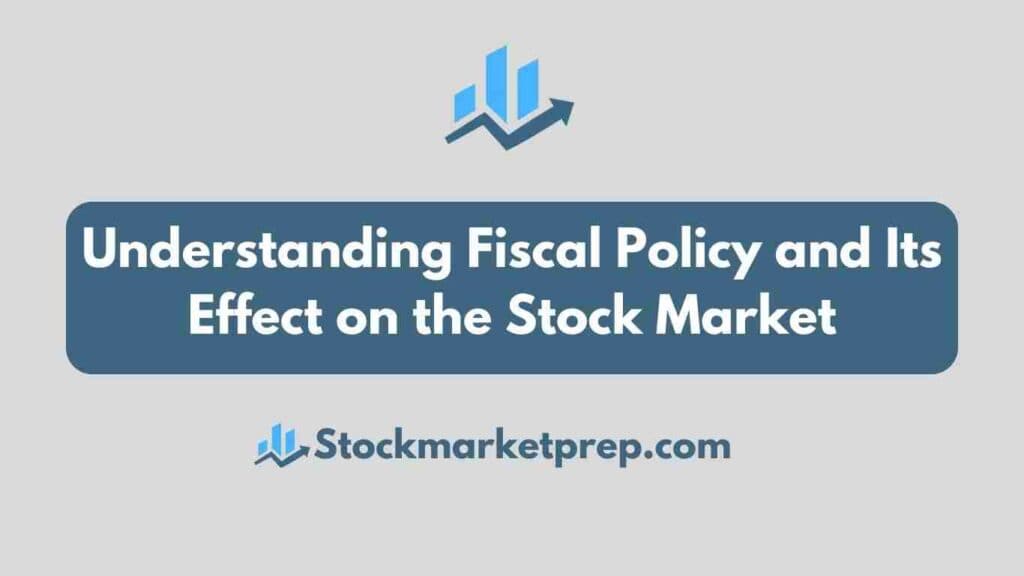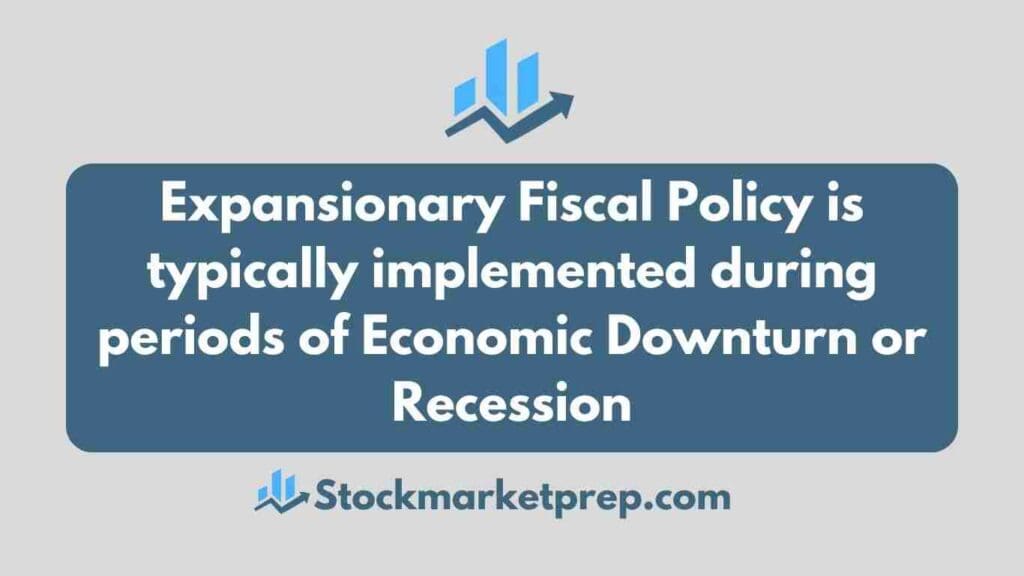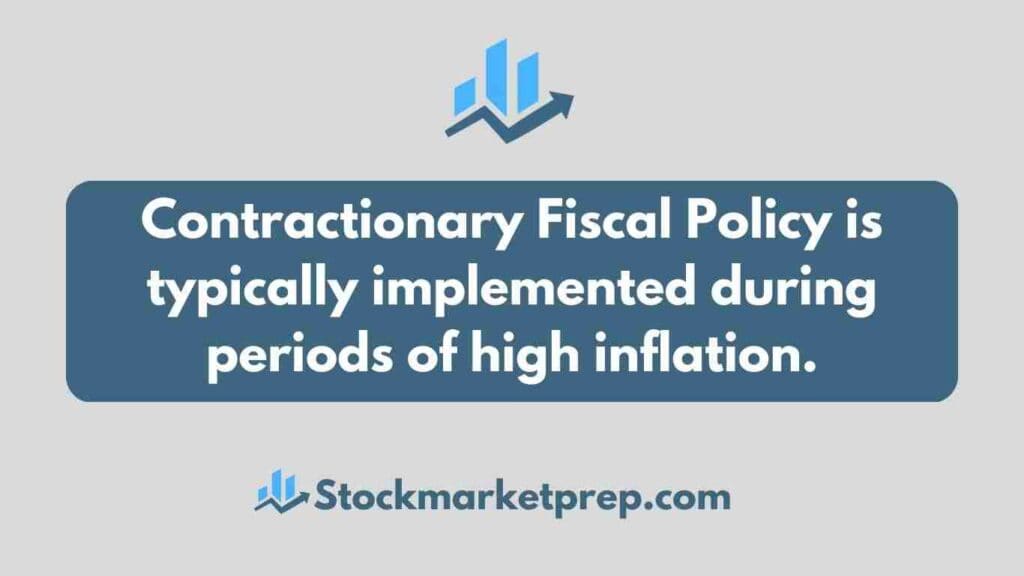Fiscal policy is a tool used by governments to stabilize the economy and achieve macroeconomic objectives. It refers to the use of government spending and taxation policies to influence the economy’s aggregate demand and supply. Fiscal policy is a critical component of economic policy and has a significant impact on the stock market. In this post, we will discuss the types of fiscal policy, their impact on the stock market in India, and the key indicators of fiscal policy.

Table of Contents
ToggleTypes of Fiscal Policy:
1. Expansionary Fiscal Policy:

Expansionary fiscal policy is a type of economic policy that involves increasing government spending and lowering taxes to boost aggregate demand and stimulate economic growth. The objective of expansionary fiscal policy is to create an environment in which businesses and consumers are more likely to spend and invest, thereby stimulating economic activity.
Expansionary fiscal policy is typically implemented during periods of economic downturn or recession. During such times, there is a decrease in consumer and business spending, leading to a decrease in aggregate demand, which results in a decline in economic growth. By increasing government spending and lowering taxes, expansionary fiscal policy increases disposable income and encourages consumer spending, leading to increased demand for goods and services.
Expansionary fiscal policy can also have a positive impact on the stock market. When the government increases spending on infrastructure projects, for example, it creates jobs and boosts economic activity. As a result, businesses benefit from increased demand, leading to higher profits, which in turn can lead to higher stock prices.
However, expansionary fiscal policy can also have negative consequences. If the government increases spending without raising sufficient revenue, it can lead to inflation and a decline in the value of the currency. In addition, expansionary fiscal policy can increase the government’s debt, which can have long-term negative consequences for the economy.
India:
In 2019, the Indian government implemented an expansionary fiscal policy by cutting corporate tax rates. The policy aimed to increase investment and promote economic growth. By lowering tax rates, the government aimed to provide businesses with more disposable income, which could be invested in expansion and hiring. The policy resulted in increased corporate profits, higher demand for goods and services, and an overall increase in economic growth.
USA:
In 2008, the US government implemented an expansionary fiscal policy through the American Recovery and Reinvestment Act (ARRA). The policy aimed to stimulate economic growth and create jobs during the Great Recession. The ARRA involved an increase in government spending on infrastructure projects, education, and healthcare, and a tax cut for middle-income earners. The policy led to increased consumer and business spending, job creation, and an overall increase in economic growth.
Overall, expansionary fiscal policy is a tool that governments can use to stimulate economic growth and increase aggregate demand. However, it must be used judiciously and balanced against long-term fiscal considerations to ensure that the benefits outweigh the costs.
2. Contractionary Fiscal Policy:

Contractionary fiscal policy is a type of economic policy that involves decreasing government spending and increasing taxes to reduce aggregate demand and control inflation. The objective of contractionary fiscal policy is to slow down the economy by reducing consumer and business spending, thereby controlling inflationary pressures.
Contractionary fiscal policy is typically implemented during periods of high inflation, when the economy is overheating, and there is an excess demand for goods and services. By decreasing government spending and increasing taxes, contractionary fiscal policy reduces disposable income and discourages consumer spending, leading to decreased demand for goods and services.
Contractionary fiscal policy can also have a negative impact on the stock market. When the government reduces spending on infrastructure projects, for example, it can lead to decreased economic activity and lower profits for businesses, which can cause a decline in stock prices.
However, contractionary fiscal policy can also have positive consequences. By controlling inflation, it can help maintain the purchasing power of the currency and improve the country’s overall economic stability. It can also help reduce the government’s debt burden by increasing revenue through higher taxes.
India:
In 2012, the Indian government implemented a contractionary fiscal policy by cutting subsidies on fuel prices. This policy aimed to reduce the government’s budget deficit and control inflation. By reducing subsidies, the government aimed to increase revenue and reduce expenditure. However, the policy led to an increase in fuel prices, which impacted the cost of transportation and production, resulting in lower demand for goods and services. This, in turn, led to lower economic growth and a decline in the stock market.
USA:
In 2013, the US government implemented a contractionary fiscal policy through the Budget Control Act. This policy aimed to reduce the federal budget deficit by reducing government spending on discretionary programs like defense and non-defense programs. The policy also involved an increase in taxes for higher-income earners. However, the policy led to a decrease in government spending and a slowdown in economic growth, which impacted the stock market negatively
Overall, contractionary fiscal policy is a tool that governments can use to control inflation and ensure economic stability. However, it can have negative consequences, such as decreased economic growth and lower stock prices, and must be used judiciously and balanced against long-term fiscal considerations.
3. Key Indicators of Fiscal Policy:
Government Spending: Government spending is the amount of money spent by the government on goods and services. The types of government spending include capital expenditure, revenue expenditure, and transfer payments. In India, the government’s spending on infrastructure projects, social welfare schemes, and defense spending are examples of government spending that can impact the stock market.
Taxation: Taxation is the process of levying taxes on individuals and businesses to generate revenue for the government. The types of taxation include direct taxes like income tax and indirect taxes like GST. In India, changes in tax policies, such as tax cuts or tax increases, can impact the stock market.
Historical Examples: In 2016, the Indian government’s demonetization policy aimed to curb black money and increase tax compliance. The policy led to a temporary slowdown in economic activity and a decline in the stock market. In 2017, the introduction of the Goods and Services Tax (GST) aimed to simplify the tax system and increase tax compliance. The policy led to short-term disruptions in the economy, but eventually, the stock market rebounded.
4. Conclusion:
Fiscal policy plays a crucial role in the Indian economy and has a significant impact on the stock market. Expansionary fiscal policy can boost the stock market by increasing consumer spending and investment opportunities, while contractionary fiscal policy can have the opposite effect. Government spending and taxation policies are key indicators of fiscal policy that can impact the stock market. Understanding fiscal policy is important for stock market investors in India, and the future outlook on the impact of fiscal policy on the Indian stock market will depend on the government’s economic policies and the country’s overall economic performance.
5. Questions & Answers:
Q: What is fiscal policy?
A: Fiscal policy refers to the use of government spending and taxation policies to influence the economy’s aggregate demand and supply.
Q: What are the types of fiscal policy?
A: The two types of fiscal policy are expansionary fiscal policy, which involves increasing government spending and lowering taxes to boost aggregate demand and stimulate economic growth, and contractionary fiscal policy, which involves decreasing government spending and increasing taxes to reduce aggregate demand and control inflation.
Q: How does expansionary fiscal policy impact the stock market in India?
A: Expansionary fiscal policy can have a positive impact on the stock market in India by increasing consumer spending and investment opportunities, which can lead to higher corporate profits and stock prices.
Q: What are the key indicators of fiscal policy?
A: The key indicators of fiscal policy include government spending, which is the amount of money spent by the government on goods and services, and taxation, which is the process of levying taxes on individuals and businesses to generate revenue for the government.
Q: How does historical examples of fiscal policy impact the stock market in India?
A: Historical examples of fiscal policy in India, such as demonetization in 2016 and the introduction of GST in 2017, have had short-term impacts on the stock market due to disruptions in the economy. However, the long-term impacts of these policies have varied.
Q: Why is understanding fiscal policy important for stock market investors in India?
A: Understanding fiscal policy is important for stock market investors in India because fiscal policy can have a significant impact on the economy and the stock market. By understanding how government spending and taxation policies impact the economy, investors can make informed decisions about their investments.
Q: What is the future outlook on the impact of fiscal policy on the Indian stock market?
A: The future outlook on the impact of fiscal policy on the Indian stock market will depend on the government’s economic policies and the country’s overall economic performance. It is important for investors to stay informed about changes in fiscal policy and how they may impact the stock market.
Pingback: Deflationary Spirals: Causes, Effects, and Policy Responses
Pingback: The Effects of Corporate Debt on the Economy